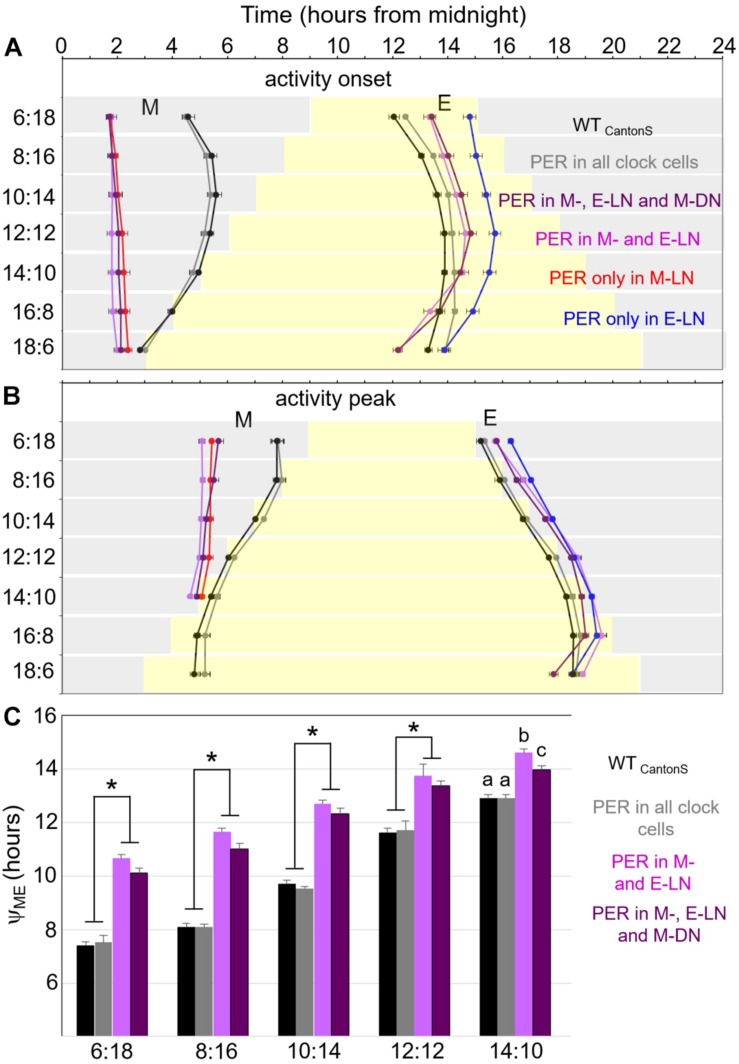FIGURE 4.
Timing of morning and evening activity in most of the strains shown in Figures 1, 2 under the different photoperiods. We were not able to reliably determine the phases of M activity in flies with PER only in the M-DN. Therefore, these flies are not included here. (A) Timing of onset of morning and evening activity, respectively. (B) Timing of morning and evening activity peaks. (C) Distances between morning and evening activity peaks (YME) until a photoperiod of 14 h. Error bars show standard errors of the mean. A two-way ANOVA revealed a clear dependence of YME on photoperiod [F(5, 604) = 486.579; p < 0.001] and on the strain [F(3, 604) = 173.384; p < 0.001], as well as a significant interaction between both [F(15, 604) = 7.204; p < 0.001], which indicates that the response to photoperiod is significantly different in the different strains. A post hoc analysis showed that YME is significantly shorter in the wild-type strain (WTCantonS) and flies with PER rescued in all clock cells as compared to flies in which PER was only rescued in specific subgroups (p < 0.001, asterisks). At all photoperiods, there is a tendency that YME is shorter in the flies, in which PER is rescued in the M-DN in addition to the M- and E-LN as compared to only in the M- and E-LN. However, this difference turned out to be only significant (p = 0.018) under the longest day (14:10) as indicated by different letters.

